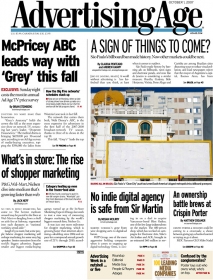I was looking at an industry profile of the US hot beverage industry, and noticed that one of the leading companies, Altria Group Inc. (MO), reportedly was a parent company of both Philip Morris USA (formerly with ticker PM USA, now not so sure) and Kraft Foods Inc. (KFT). This created a shocking mental image of money paid for Lunchables going into the same proverbial pockets as money paid for Marlboros. But when I looked up Philip Morris and Kraft Foods in another database, Altria Group was only listed as the parent company for the former…sort of. There’s Philip Morris International, Inc. (PM) which is listed as “public–parent” in Lexis-Nexis. Then there’s Philip Morris USA Inc. which doesn’t have a ticker, and is listed as a subsidiary of Altria Group. My curiosity was officially piqued.
If I regularly read the Financial Times or Forbes I would probably have known about this, but as a regular ol’ consumer, it is news to me. In 2008 Altria separated Philip Morris International from Phillip Morris USA. Why? According to a January 30, 2008 article from Forbes:
“the separation of Philip Morris International would yield higher shareholder value because it allows Altria to separate its faster-growing international arm, Philip Morris International, from its smaller American business, and the legal and public image problems it faces in the United States.[…] The spin-off will allow Philip Morris International to avoid pending legislation to give the Food and Drug Administration the authority to restrict tobacco advertising, regulate warning labels and remove hazardous ingredients.”
Nice. Real nice. It’s weird though, because I can’t imagine the regulation of warning labels in the US could surpass the warnings they already have in Europe. (wow thanks Wikipedia for that compendium of warning labels in numerous languages!) The article continues:
“The spin-off will leave Altria with Philip Morris USA, its domestic cigarette business, and a 28.6% stake in London-based beer company SABMiller, which makes Miller Genuine Draft, Pilsner Urquell and Snow.”
These corporate interminglings never cease to amaze me. But what about Kraft? Apparently, on March 30, 2007 Altria “divested” Kraft Foods. There’s even an NPR interview about it, though the title is a bit misleading. I wouldn’t say the CEO really explains the spin-off so much as she discusses hot dogs and how much people love mac ‘n’ cheese. Despite that, this seems like a pretty good moment of journalistic inquiry:
INSKEEP: The basics first, why split off from what was once known as Philip Morris?
Ms. ROSENFELD: Well, it’s a terrific opportunity for us to be able to make better use of some of our financial capabilities, as well as to pursue some new growth opportunities for the company.
INSKEEP: May I try to put that in layman’s terms. When you say make better use of your financial capabilities, do you mean make sure that Kraft’s money is not tied up in tobacco lawsuits?
Ms. ROSENFELD: No, I wouldn’t – certainly wouldn’t express it that way.
Of course not!

So, lessons learned in this little research adventure:
1. Don’t assume industry profiles have accurate information. The one I was reading was from a highly respected source, published in October 2008…many months after these spin-offs/divestments etc. took place, but it indicated nothing about all the aforementioned shapeshifting.
2. Don’t assume the profits from your Toblerone or candy pagers aren’t going to one of the worlds largest tobacco companies. (they might not be, anymore…for now, in this case only. maybe. hrm.) Back in the days when I was vigilant about finding this stuff out, I used the website Responsible Shopper (now “Green America”) a lot. I haven’t used it for years but from what I can tell it’s still got good info.
What a weird world we live in.
Snapshot from the “products” section of Business & Company Resource Center’s info on Altria Group:





























